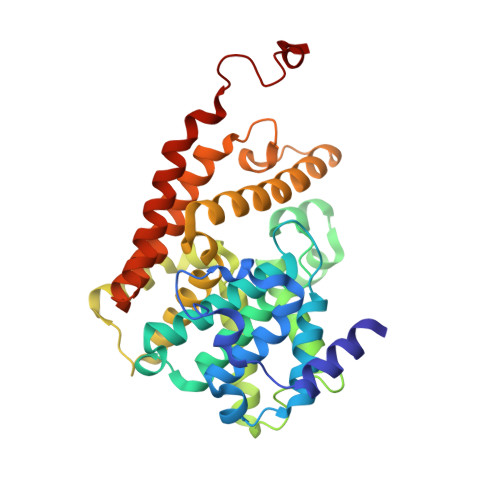Mathematical and Structural Characterization of Strong Nonadditive Structure-Activity Relationship Caused by Protein Conformational Changes.
Gomez, L., Xu, R., Sinko, W., Selfridge, B., Vernier, W., Ly, K., Truong, R., Metz, M., Marrone, T., Sebring, K., Yan, Y., Appleton, B., Aertgeerts, K., Massari, M.E., Breitenbucher, J.G.(2018) J Med Chem 61: 7754-7766
- PubMed: 30070482
- DOI: https://doi.org/10.1021/acs.jmedchem.8b00713
- Primary Citation of Related Structures:
6C7D, 6C7E, 6C7F, 6C7G, 6C7I, 6C7J - PubMed Abstract:
In medicinal chemistry, accurate prediction of additivity-based structure-activity relationship (SAR) analysis rests on three assumptions: (1) a consistent binding pose of the central scaffold, (2) no interaction between the R group substituents, and (3) a relatively rigid binding pocket in which the R group substituents act independently. Previously, examples of nonadditive SAR have been documented in systems that deviate from the first two assumptions. Local protein structural change upon ligand binding, through induced fit or conformational selection, although a well-known phenomenon that invalidates the third assumption, has not been linked to nonadditive SAR conclusively. Here, for the first time, we present clear structural evidence that the formation of a hydrophobic pocket upon ligand binding in PDE2 catalytic site reduces the size of another distinct subpocket and contributes to strong nonadditive SAR between two otherwise distant R groups.
Organizational Affiliation:
Dart Neuroscience LLC , 12278 Scripps Summit Drive , San Diego , California 92131 , United States.

















